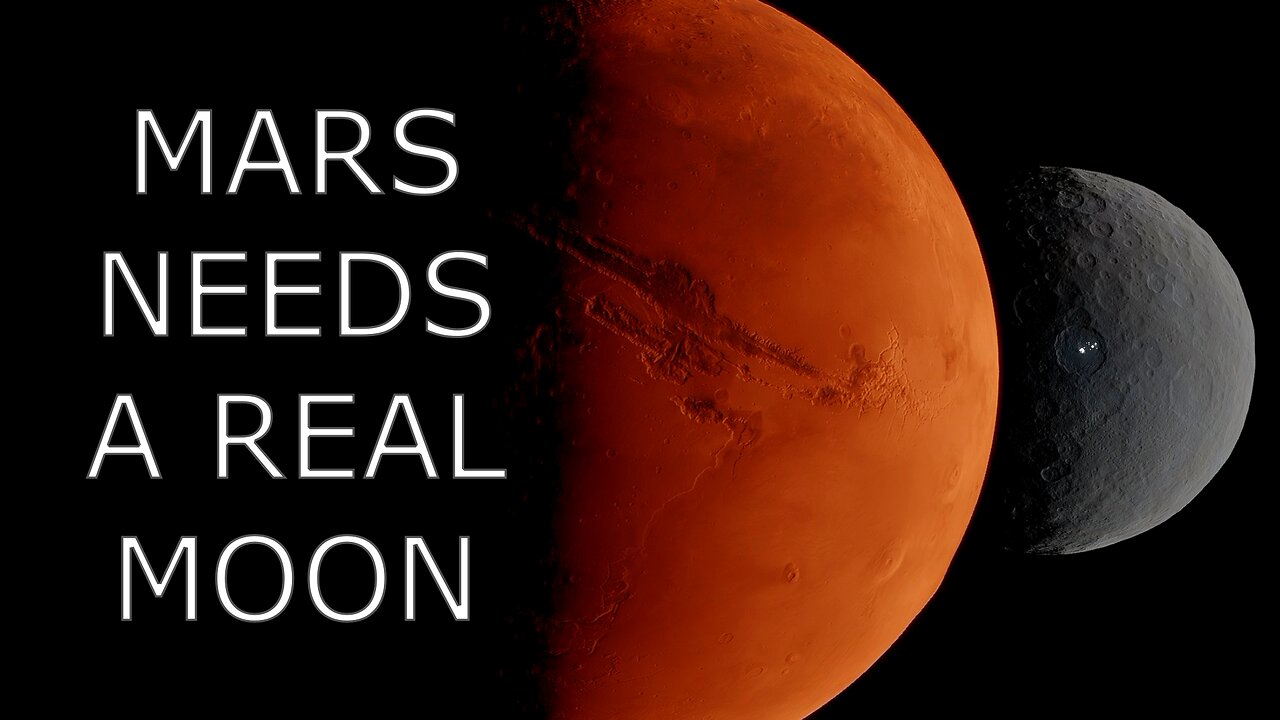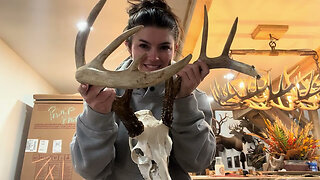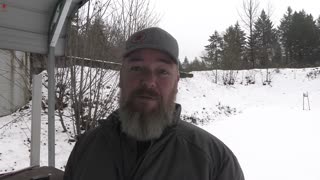Premium Only Content

What Everyone Gets Wrong About MARS 🔴
Moving Ceres into Low Orbit Around Mars: A Terraforming Strategy
Introduction to Terraforming Mars
Terraforming refers to the process of modifying a planet’s environment to make it habitable for Earth-like life. Mars, with its thin atmosphere and cold temperatures, presents significant challenges for terraforming. The idea of moving Ceres, a dwarf planet located in the asteroid belt between Mars and Jupiter, into low orbit around Mars is an intriguing concept that could potentially aid in this endeavor.
Ceres: An Overview
Ceres is the largest object in the asteroid belt and has a diameter of about 940 kilometers (584 miles). It contains water ice, organic compounds, and various minerals. The presence of water is particularly crucial because it can be used to create an atmosphere and support life.
Step 1: Water Resource Utilization
One of the primary benefits of moving Ceres into orbit around Mars would be the access to its water resources. Ceres is estimated to contain about 40% of its mass as water ice. By extracting this water, we could:
Create a Thicker Atmosphere: Water vapor can contribute to greenhouse gas effects, helping to warm the Martian surface.
Support Liquid Water Bodies: Introducing water into Martian valleys or creating artificial lakes could help stabilize temperatures and promote biological processes.
Step 2: Enhancing Atmospheric Pressure
Mars currently has an atmospheric pressure less than 1% that of Earth. By utilizing Ceres’ water and other volatiles (like carbon dioxide), we could gradually increase the atmospheric pressure on Mars. This increase would:
Allow for Liquid Water Stability: Higher pressure would enable liquid water to exist on the surface without evaporating immediately.
Facilitate Weather Systems: A thicker atmosphere could lead to weather patterns similar to those on Earth, which are essential for sustaining ecosystems.
Step 3: Introducing Organic Compounds
Ceres contains organic materials that are fundamental for life. Moving Ceres close enough to Mars could allow for:
Delivery of Nutrients: These organic compounds could be released onto the Martian surface, enriching soil quality and making it more suitable for plant growth.
Potential Microbial Life: If microbial life exists on Ceres, introducing it to Mars might kickstart biological processes that are vital for long-term terraforming.
Step 4: Creating a Stable Orbital Environment
For Ceres to be effectively utilized in terraforming efforts, it must be placed in a stable orbit around Mars. This involves complex calculations regarding gravitational interactions and orbital mechanics. A stable orbit would allow:
Consistent Resource Availability: Regular access to water and nutrients from Ceres without risking collision or destabilization.
Potential Infrastructure Development: Establishing bases or facilities on or near Ceres could facilitate ongoing research and resource extraction efforts.
Step 5: Long-Term Sustainability
The ultimate goal of moving Ceres into orbit around Mars would be not just immediate resource utilization but also establishing a sustainable ecosystem over time. This includes:
Biodiversity Promotion: As conditions improve on Mars through increased temperature and atmospheric pressure, diverse forms of life could be introduced gradually.
Self-Sustaining Ecosystems: Eventually creating systems where flora and fauna can thrive independently without continuous human intervention.
Conclusion
Moving Ceres into low orbit around Mars presents a multifaceted approach toward terraforming the Red Planet by leveraging its abundant resources—especially water—and enhancing atmospheric conditions necessary for supporting life. While this concept remains theoretical at present due to technological limitations and ethical considerations regarding planetary protection, it opens up exciting possibilities for future exploration and colonization efforts.
100% of Rumble Views
AND CHANNEL REVENUE
Go To Private MOON Mission!
https://rumble.com/user/WhatsNextVids
Subscribe:
https://www.youtube.com/@TheBetterNASAProject
Patreon:
https://www.patreon.com/user?u=37594401
Buy Me A Coffee:
https://www.buymeacoffee.com/whats.next
Donate With Cash App:
https://cash.app/$YTpayments
X/Twitter:
https://x.com/WhatsNe75388303
-
 11:21
11:21
TimcastIRL
4 hours agoGOP Rep Says TWO SHOOTERS In JFK Assassination As FBI Uncovers TROVE Of Secret Documents
47.4K80 -
 1:04:55
1:04:55
Bare Knuckle Fighting Championship
3 days agoBKFC ITALY PRESS CONFERENCE | LIVE!
11.7K -
 10:04
10:04
Space Ice
2 hours agoThe Movie Silent Hill Is Like Resident Evil Without The Good Parts - Worst Movie Ever
6.24K4 -
 5:49
5:49
Hannah Barron
23 hours agoRedneck Euro Mount
7.15K19 -
 32:34
32:34
hickok45
7 hours agoSunday Shoot-a-Round # 268
3.56K7 -
 27:33
27:33
The Finance Hub
17 hours ago $1.98 earnedBREAKING: ALINA HABBA JUST DROPPED A MASSIVE BOMBSHELL!!!
9.29K46 -
 40:23
40:23
PMG
21 hours ago $0.18 earnedHannah Faulkner and Dr. Michael Schwartz | EXPOSING BIG PHARMA
5.7K -
 18:55
18:55
GBGunsRumble
19 hours agoGBGuns Range Report & Channel Update 15FEB25
3.57K -
 13:31:32
13:31:32
iViperKing
20 hours agoGood Times + Good Energy Ft. Whez.. #VKGFAM #RRR
92.4K13 -
 12:24
12:24
Winston Marshall
1 day agoWOAH! Bannon just Revealed THIS About MUSK - The Tech-Right vs MAGA Right Civil War Ramps Up
219K304